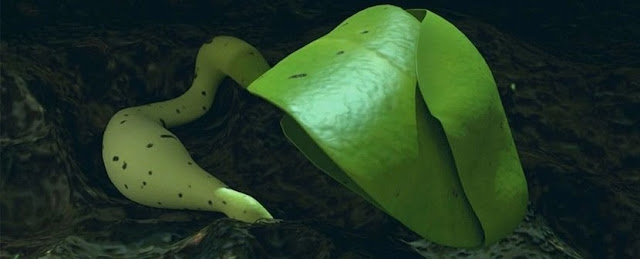China made history by landing its Change-4 spacecraft on the moon's far side. The mission was also the first to experiment with growing plants on the moon, and it transported a mini-biosphere dubbed the Lunar Micro Ecosystem to the lunar surface (LME).
[This is an updated version of previous article]
Except for the microgravity and cosmic radiation, the circumstances inside this compact, cylindrical biosphere were comparable to those on Earth. The LME included potato seeds, cotton seeds, rapeseeds, yeast and Arabidopsis thaliana, a common weed.
Except for the cotton, all of them perished shortly back in 2019. A new 3D reconstruction indicates that the cotton plant sprouted two leaves before dying to frigid conditions after roughly two weeks. The findings indicate that the experiment was somewhat more effective than previously thought.
If NASA or other space organizations want to conduct long-term missions, they must learn how to consistently cultivate plants in space.
“Simply packing some multi-vitamins will not be enough to keep astronauts healthy as they explore deep space,” NASA wrote in April. “They will need fresh produce.”
Why? Some factors are logistical in nature. Nutrients in supplements and prepared meals, for example, may degrade with time, and radiation may hasten this process. As a result, producing fresh vegetables would provide astronauts with more nutrients, as well as better-tasting meals. Also, if astronauts could grow plants aboard spacecraft, they wouldn't need to bring as much prepared food with them.
However, there are psychological advantages to growing plants in space.
“We already know from our pioneering astronauts that fresh flowers and gardens on the International Space Station create a beautiful atmosphere and let us take a little piece of Earth with us on our journeys,” NASA wrote. “They’re good for our psychological well-being on Earth and in space.”
NASA is also concerned about making astronaut meals in space a pleasurable experience. For example, on previous trips, the agency prepared comfort food and holiday dinners, and it performed a study on astronauts' preferences for group vs solitary eating, as well as whether they benefit from making their own food. Other academics are investigating how astronauts' emotional requirements might be met by space-eatingeating, as well as how to mitigate space-travel-specific phenomena such as loss of smell.
“At the end of the day, we’re not worried about the muscle cells,” NASA nutritionist Scott Smith told Eater. “We’re worried about the human.”
Reference(s): Source

Comments
Post a Comment